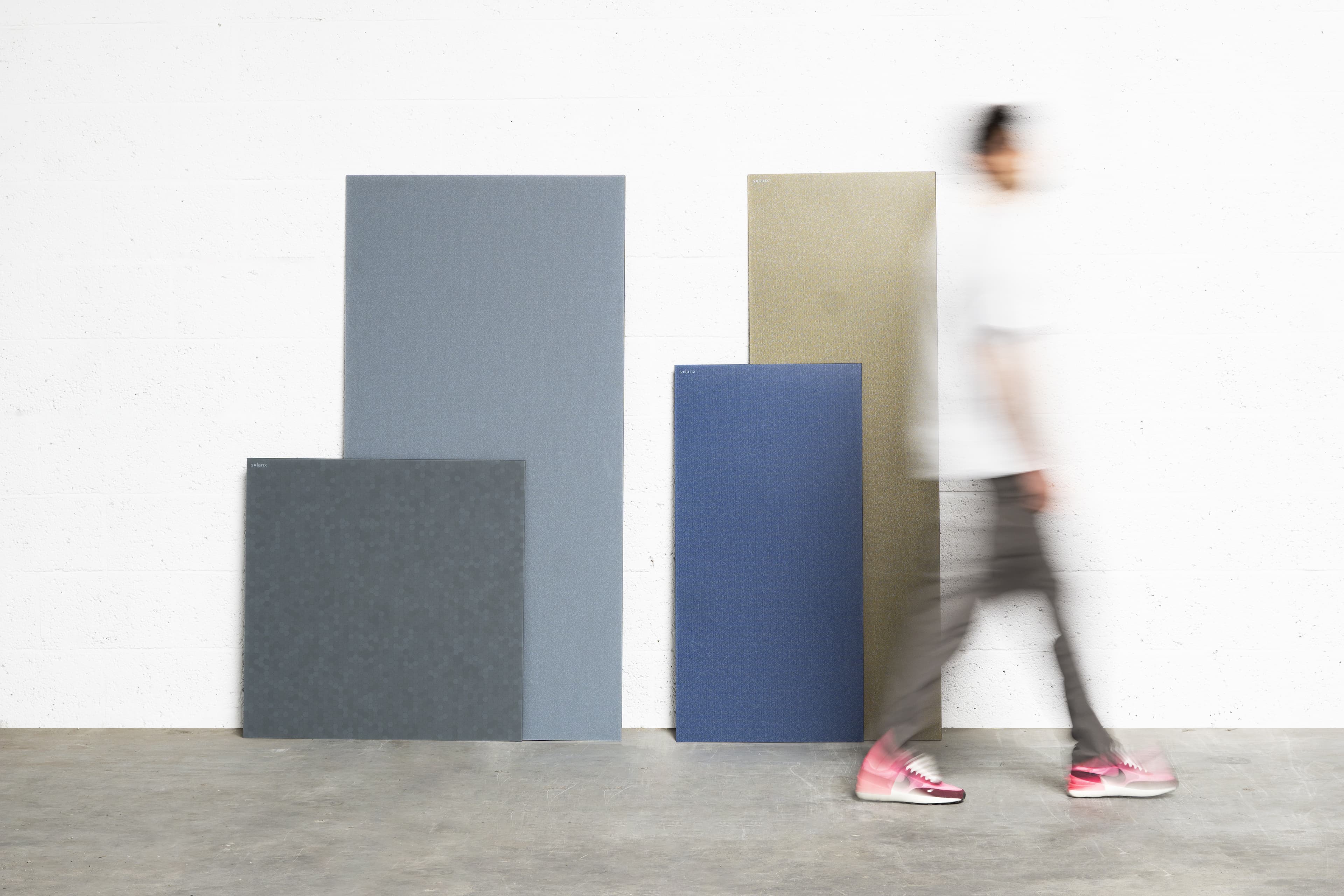
Ideal dimensions of solar panels for facades
Seamless integration with 4 standard module sizes – or customization. Different sizes of solar panels to make sustainability in construction simple, fast and above all beautiful.
4 standard sizes of solar panels with an optimal cell layout that fit in with modular construction.
Advantages of standard size solar panels for the facade
The standard panels have been developed with an optimal cell layout per m² and therefore ensure maximum yield on the facade.
Optimal integration of solar cells contributes to greater CO2 reduction per panel and can therefore make a major contribution to the sustainability requirements of every building.
The dimensions of the solar panels match perfectly the module dimensions in construction. Every architect and (facade) builder can immediately start drawing the panels in the facade.
Standard size panels are easy to integrate, due to lower start-up and development costs compared to custom panels. This is the ideal business case for solar panels on the facade.
Generate standard solar facade panels
590 x 1190 mm
178 Wp/m² black and 134 Wp/m² average in colour.590 x 1790 mm
189 Wp/m² black and 142 Wp/m² average in colour.890 x 890 mm
196 Wp/m² black and 147 Wp/m² average in colour.890 x 1790 mm
191 Wp/m² black and 144 Wp/m² average in colour.
The yields mentioned above are an indication of optimal orientation of the panels, and yields of colours and designs may vary.
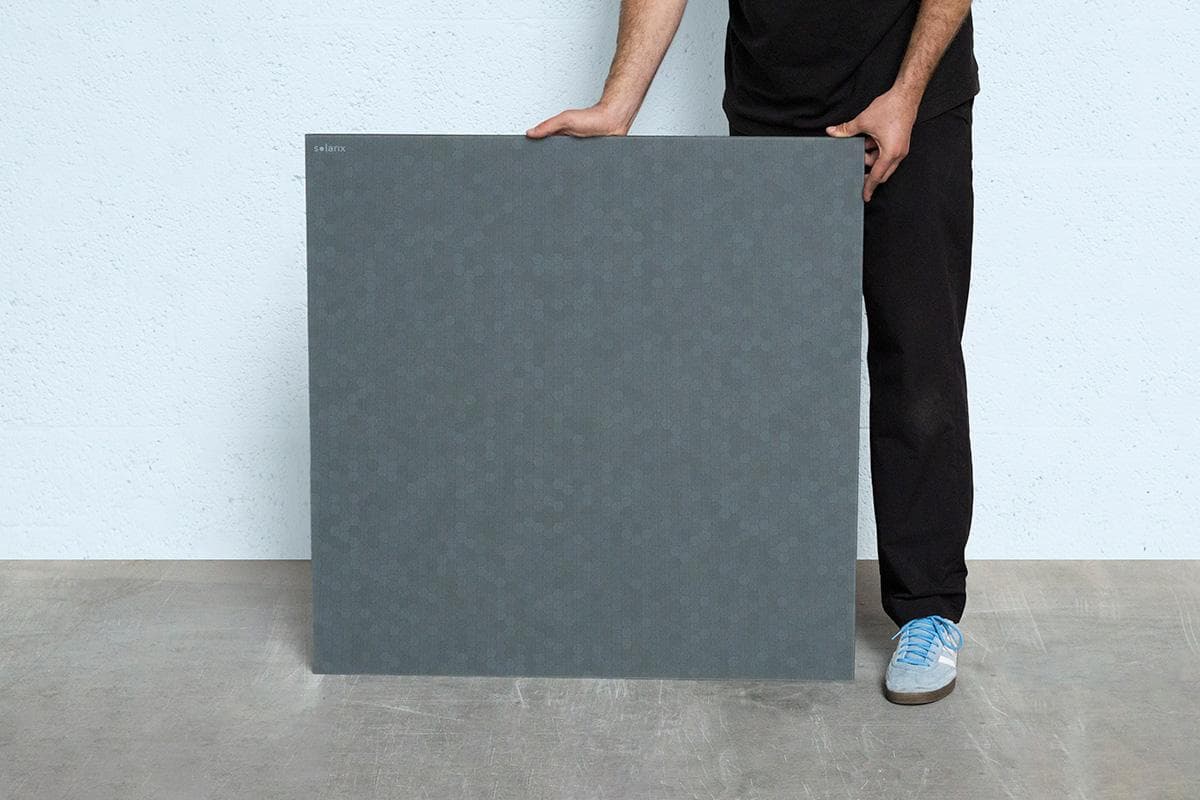
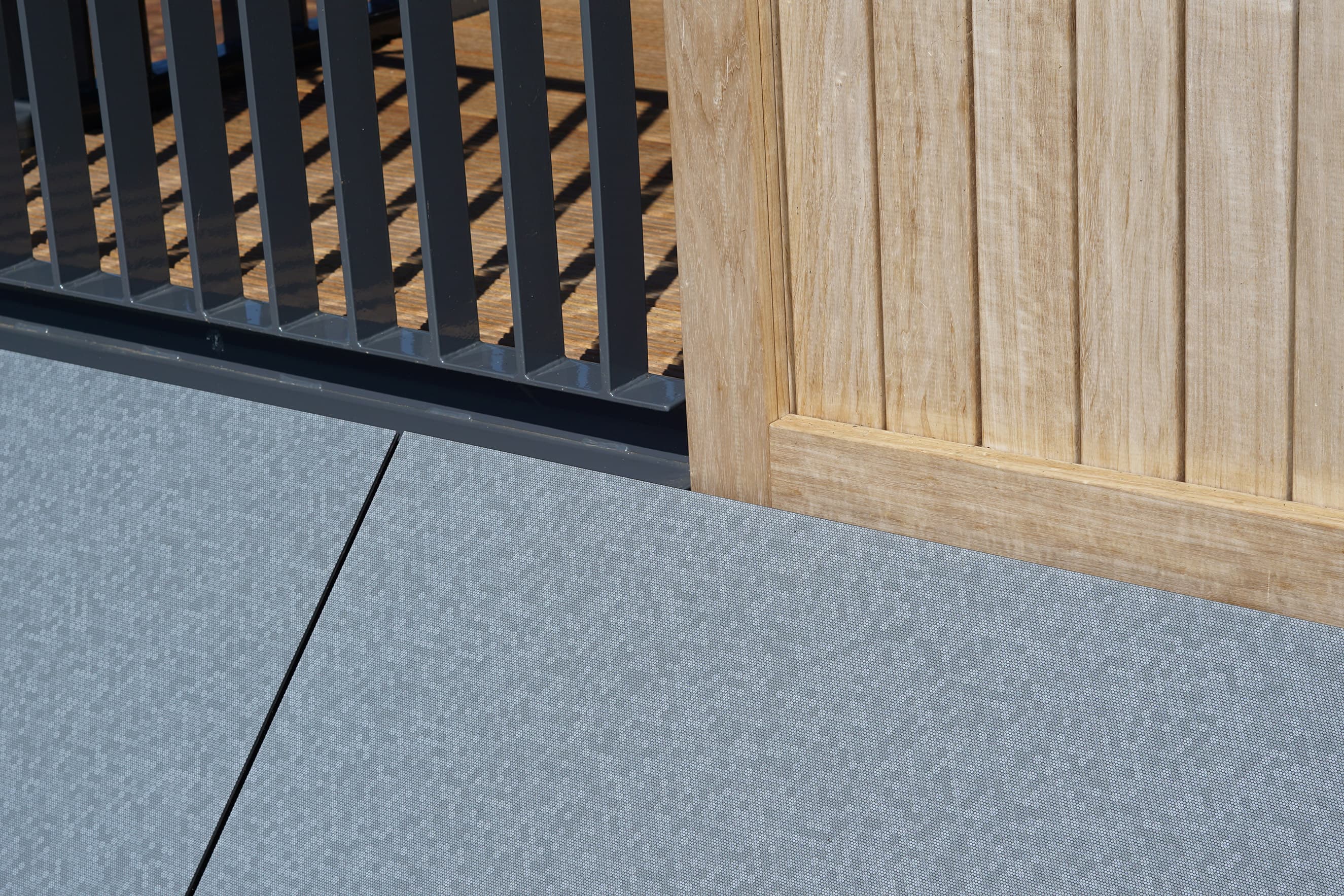
Want to get started with Solarix standard panels? Immediately download all information and draw models
Brochures
Technical drawings
Customization for optimal integration of solar panels in leading architecture or sustainable redevelopment
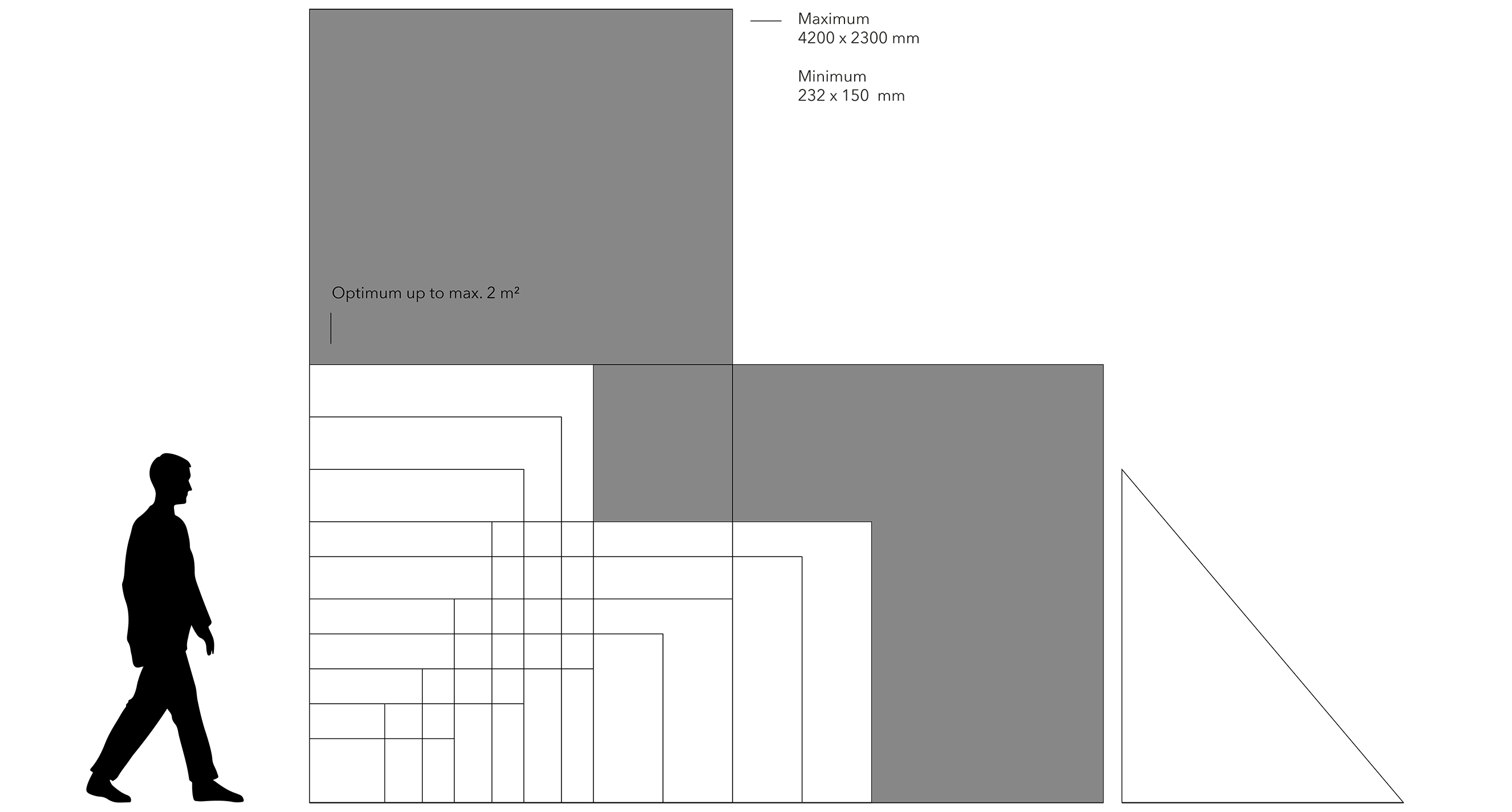
What is the optimal solar cell integration for custom solar facades?
Solarix solar panels for the facade are glass/glass panels between which the solar cells are encapsulated. The size and quantity of the solar cells determines the optimal dimensions of a panel and the final amount of energy generated. For each project we look at what the desired dimensions of the solar panels can be. The Solarix engineering team looks for optimal coverage of the cells in the panels and coverage over the entire facade. Sometimes it happens that the desired panel size deviates from the solar cell coverage ratio and 'dead space' is created, which leads to a lower power density (Wp/m²) of the entire facade.
A few rules for sizing custom panels:
The optimal maximum size of a facade panel is 2 m²
Dimensions larger than 2 m² may incur an additional charge due to the complexity of production, assembly (weight) and transport.Maximum dimensions are 4200 x 2300 mm
However, the maximum dimensions are very complex to produce and assemble. We recommend that you only register PV panels larger than 2 m² after consultation with our engineering team.Minimum size is 246 x 398 mm.
For smaller panels as fillers for a solar facade, non-active 'dummy' panels are often chosen.Solar cell integration, shadow on the facade and the electrical plan of the facade influence the dimensions.
What does shade mean for facade solar panels and their dimensions?
In some projects there is shadow. Sometimes in such a way that part of the solar panel is in the shade and another part is not. This can have major negative consequences for the yields of the panels. For optimal performance of the panels, a facade is designed that does not allow shadows to fall on the solar panels. If this is the case, Solarix can provide input at an early stage about the electrical design of the solar panels and the overall design of the building and facades. Playing with dimensions and additional non-active 'Dummy panels' can contribute to an attractive facade design.
What influence does the electrical plan of the facade have on the dimensions?
Finally, panel size and electrical configuration together determine the electrical parameters of the solar panel. And the latter has an effect on the choice of inverters, micro-inverters or optimizers. The electric solar panel parameters must match the characteristics of these devices and the totality of the facade.
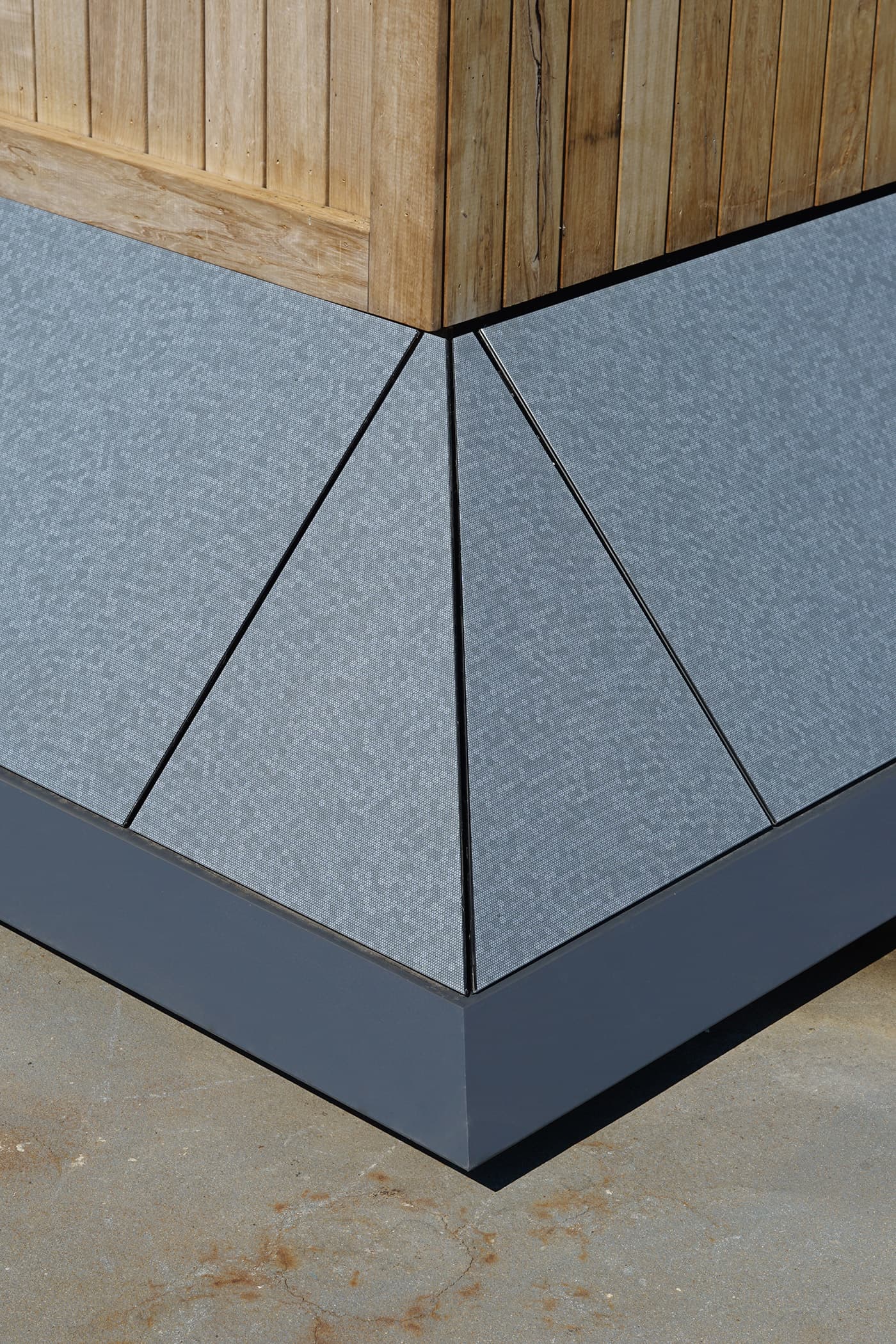
Dummy panels
For optimal connection of solar panels in the facade design, non-active fitting pieces can be used for small sizes, in places with permanent shade and for few repeating sizes. These dummy panels are aesthetically similar to active panels, but do not contain solar cells and are therefore financially more advantageous.
Non-rectangular panels as fitting pieces are possible and are offered as dummy panels.
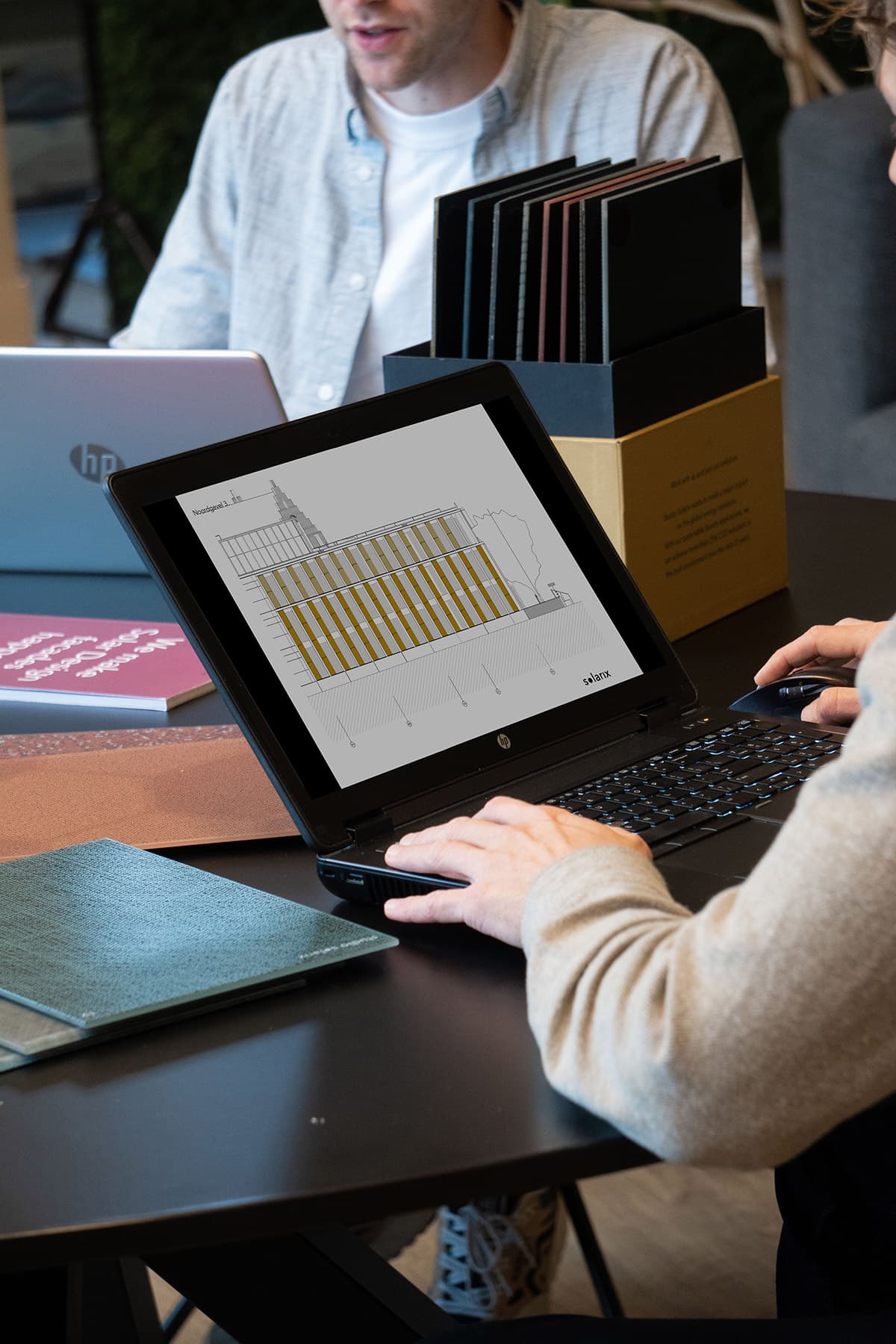
The Solarix team contributes to facade engineering and optimizations
Colours and designs
Our collections offer a wide range of colors and designs to choose from. We offer a tailor-made process for architects in which we jointly develop a design that fits perfectly with the project. This can be a design based on the collections or a uniquely developed pattern.
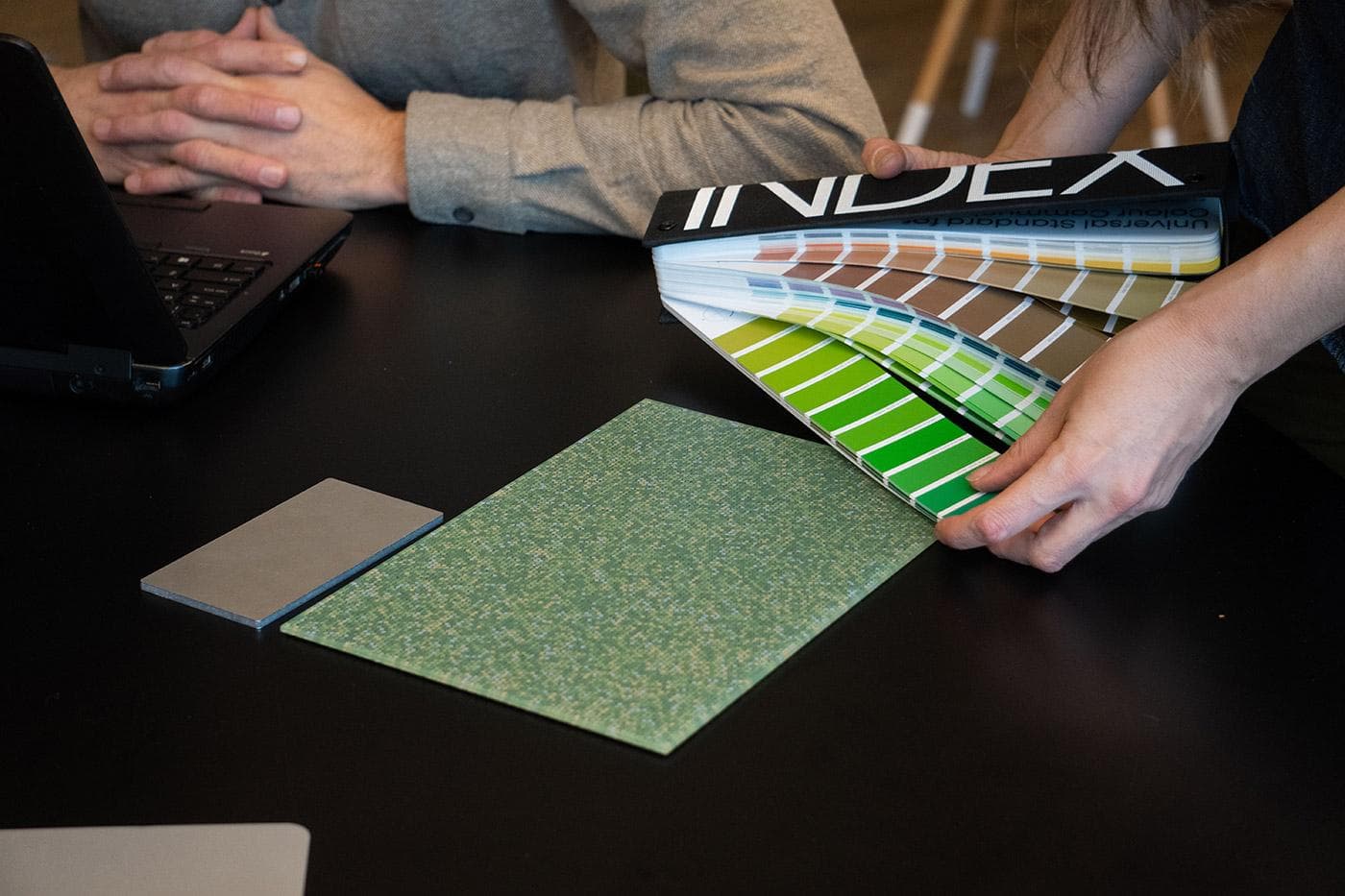
What sizes of solar panels can be integrated on the facade of your building?
Frequently asked questions about solar facades
To provide you insight into the application possibilites of our solar-facadepanels, we would like to invite you for an intake so we can discuss your project(s). We are happy to have you in our showroom in Weesp near Amsterdam, or we schedule an online appointment. When applicable, we can make a Solarcheck for the project that will give you insight into the potential energy generation of the facades and the business case.
The next step is a SolarScan. This is paid preliminary engineering in which we investigate in detail how our panels should be integrated into the facade. This includes detailing, panel layouts, research into optimalisation options, extensive insolation study incl. shadowing, and a proposal for the mounting system.
Please contact our accountmanagers or call +31(0)20-2440641 to schedule an intake.
A Solarix solar facade is a ventilated system and can be integrated into almost all facades. In most cases, this is possible with the Solarix mounting system, such as for a facade builder of timber frame construction or steel, sandwich panels, concrete and brick. The solar facade panels can also be incorporated into curtain walls, for example, in that case without the Solarix mounting system. However, these types of applications require the necessary engineering and development.
It is advised to mount horizontal strips. Work from the bottom up. However, this is not necessary. Our panels can also be mounted in an alternative order. Tough, it is important that the panels are connected by a certified electrical installer. For more details, you can find our assembly manual here.